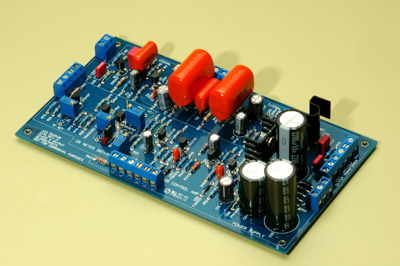Having some issues with the zero adjust part of the calibration. I've searched through this thread for other posts relating to this issue, but most seem to have worked themselves out. With the tips in those posts in mind, I'm still not getting anywhere..
To elaborate, I did the Q Bias adjustment already, of course, and had no problems there. As far as the zero adjust, I have the unit set appropriately, and can zero the VU with R71, but I can't get reach 0v with R75. I have the latest version of the board, R71 is panel mounted with the appropriate 2k pot, and the trimmers on the board are oriented exactly as they appear here:
I'm measuring at TP10 and 11, and the jumper is oriented to connect the two pins closest to the front panel. During the Q Bias adjustment, it was oriented the other way.
Is it the case that some people were only able to complete this step by choosing a different value for R71 or R75? I was pretty meticulous in putting together the unit, so I'm confident the appropriate values are in the right places, and the connections should be pretty solid. I let the unit warm up for over 20 minutes before starting this step and it spent last night burning in without issue. Is it normal for R75 to spin infinitely? This might make me think that it is broken, except for the fact that it does appear to adjust voltage between a certain range of turns. I'll continue to browse this thread, but any tips from anyone who had issues with this step would be greatly appreciated. It sucks to be this close to having a fully functioning compressor and hit a snag :-[












![Soldering Iron Kit, 120W LED Digital Advanced Solder Iron Soldering Gun kit, 110V Welding Tools, Smart Temperature Control [356℉-932℉], Extra 5pcs Tips, Auto Sleep, Temp Calibration, Orange](https://m.media-amazon.com/images/I/51sFKu9SdeL._SL500_.jpg)











